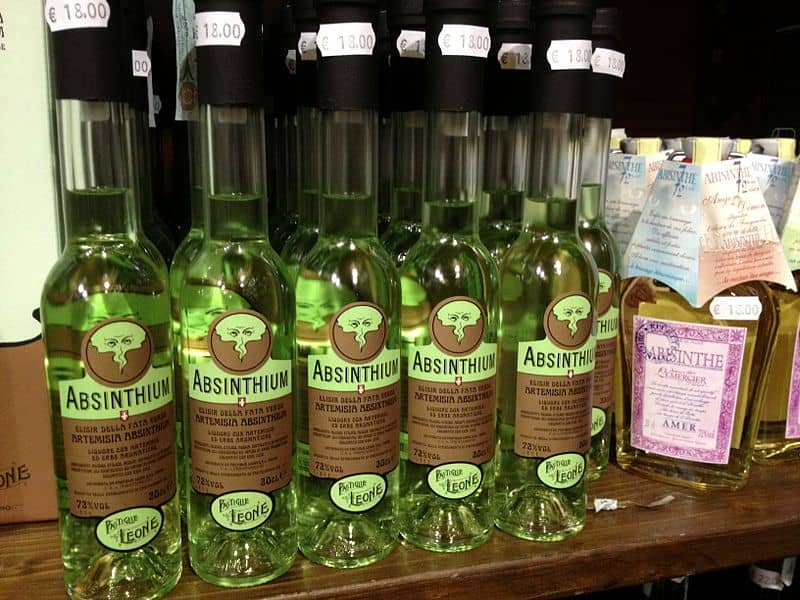Are you looking for the best French digestifs?
Digestifs come in a variety of flavors and colors, but their function is the same: to ease digestion while also giving you an excuse to take another small sip.
Digestifs, as opposed to aperitifs, which are frequently more acidic, bitter, or bracing to stimulate the appetite – have a greater depth of flavor, spice, herbs, bitterness, and sweetness.
Aperitifs are also often lower in alcohol, while digestifs can be higher in alcohol.
Looking for some after dinner drinks to help you unwind after a long day or to bring to a get-together with friends?
Since not every after-dinner drink will appeal to everyone, we compiled a diverse list of the best digestif options. So go ahead and read, eat, and drink.
Things you'll find in this article
14 Best Digestifs In France

1. Chambord
Chambord is a fruity digestif that you will enjoy if you enjoy fruity drinks. This cognac-based raspberry liqueur is flavored with raspberries, blackberries, and vanilla.
According to legend, Louis XIV created this French spirit during one of his visits to the Château de Chambord in the Loire Valley in 1685.
Despite the fact that this myth has yet to be confirmed, Chambord has become a historic favorite throughout France, particularly in Paris.
2. Absinthe

Absinthe, which contains 45-75 percent alcohol, is one of the most potent digestifs available.
According to legend, it was invented in the late 1790s by a French doctor named Pierre Ordinaire as a magical cure-all.
It is best known as Vincent van Gogh’s favorite, but it gained popularity after being given to French troops to treat malaria.
The flavor is extremely bitter, so it is not for everyone. The original recipe contained methanol, which was suspected of causing various types of paranoia.
It was declared illegal in 1914, but a new recipe was reintroduced under the brand name l’Absente in 2000.
3. Armagnac

Armagnac is an aged brandy made from grapes harvested in the French region of Armagnac near the Pyrénées mountains (near Spain).
However, due to the fact that it is produced in a much smaller area, it is rarely sold outside of France and thus is less well-known.
Armagnac is the oldest brandy in France, and it has long been thought to have “therapeutic properties.”
It should be served at room temperature in a balloon-shaped glass. Because Armagnac needs time to breathe, pour it into the glass 15 to 30 minutes before serving.
4. Izarra
Izarra is a vibrant herbal liqueur produced in Bayonne, France, in the Basque Country.
Yellow Izarra has an almond flavor, while Green Izarra has a minty flavor and is made with 16 herbs.
Izarra 54 meanwhile, has a similar flavor to Green Izarra but a much higher alcohol content.
5. Bénédictine

Benedictine is also said to be made from a recipe lost by Benedictine monks in Normandy during the French Revolution.
Bénédictine is made from twenty-seven flowers, berries, herbs, roots, and spices, and it was first offered in the nineteenth century by wine merchant Alexandre Le Grand.
It’s now found in a number of cocktails, including the Big Ben and the Singapore Sling, as well as Normandy confections and cuisines.
6. Calvados

Calvados is another member of the brandy family. It is a French aged liquor from the Basse-Normandie region. It can be used as both an aperitif and a digestif.
The apples are pressed, fermented, and double-distilled into cider. Before it can be called Calvados, the remaining eau de vie must be aged in wood casks for at least two years.
Calvados become smoother with age, so the price is a function of the price. Calvados is typically served dry or with ice in a balloon or wine glass.
7. Chartreuse

Carthusian Monks in the Chartreuse Mountains near Grenoble, France, made Chartreuse famous.
According to legend, only two monks know the exact combination of 130 herbs, plants, and flowers that François Annibal d’Estrées commanded in 1605.
The monks managed to keep the secret for decades, despite religious persecution, wars, and even a mudslide in 1935 that destroyed their distillery.
Chartreuse is typically served on the rocks in a large glass as a digestif.
8. Liqueur de Farigoule
After a heavy lunch, the liqueur de Farigoule, a typical Provence digestif, goes down smoothly.
Although it is not as well-known as other digestifs, it is a must-try if you visit Marseille or other Provence cities.
Serve the Liqueur de Farigoule neat or with ice in a balloon glass.
9. Cognac

Cognac is a brandy produced in the Cognac region of France (similar to Champagne which can only come from the Champagne region of France).
A professional blender (maître de chai) blends the cognac with other cognacs from different years before it is served to the public.
Since cognac has a richer and sweeter flavor than some herbal liquors, it is often served at room temperature.
It is traditionally served in a glass shaped like a tulip or balloon to allow it to interact with the air.
10. Cointreau

Cointreau is well-known for its use in margaritas and cosmopolitans. It can, however, be enjoyed as an aperitif or digestif on its own.
In 1875, the Cointreau brothers created an orange-flavored triple sec (dry) liqueur in Saint-Barthélemy-d’Anjou, France.
It is made with a combination of sweet and bitter orange peels and sugar beet alcohol, giving it an orange flavor and a 40% alcohol content.
Cointreau is commonly served with ice cubes in a balloon glass as a digestif.
11. Créme de Cassis

Créme de Cassis is a sweet-flavored red blackcurrant liqueur. It comes from the Burgundy and Dijon regions.
Look for a label that says ‘Crème de Cassis de Dijon,’ which guarantees that the blackcurrants grown in the area are of the highest quality.
The liqueur Créme de Cassis is also known as the main ingrédient in the cocktail Kir Royale.
12. Eau de Vie

Eau de Vie is a digestif that literally translates to “life water.” It’s a colorless, clear fruit brandy made from pears, raspberries, apples, and plums, among other things.
The Mirabelle plum liqueur from Lorraine and the Pear liqueur from the Ardèche region of France are two of the more well-known Eaux de Vie.
After an hour in the freezer, it’s usually served ice-cold in a tumbler.
13. Génépi

Since it is not overly sweet, Génépi can be used as an aperitif or digestif. It hails from the Rhone-Alps and Savoie regions of central France (near Lyon).
Génépi can also be made at home by steeping the scented flowering tips of the plant artemisia in vodka or pure grain alcohol.
Serve chilled or on ice when it’s cold outside in the winter. It’s also good with sparkling water or tonic.
14. Grand Marnier

If you don’t want to eat dessert, a sweet fruity liquor could be the solution.
Alexandre Marnier-Lapostolle created Grand Marnier, an orange-flavored liqueur, in 1880 in the French Cognac region.
It creates its own digestif by combining Cognac brandy, bitter oranges, and sugar.
Typically, a Grand Marnier is served at room temperature with an orange slice dangling from the glass.

Hi, I’m Christine – a full-time traveler and career woman. Although I’m from the Philippines, my location independent career took me to over 40 countries and lived in 4 continents in the last 10 years, including France. A self-proclaimed Francophile, I love everything France.
